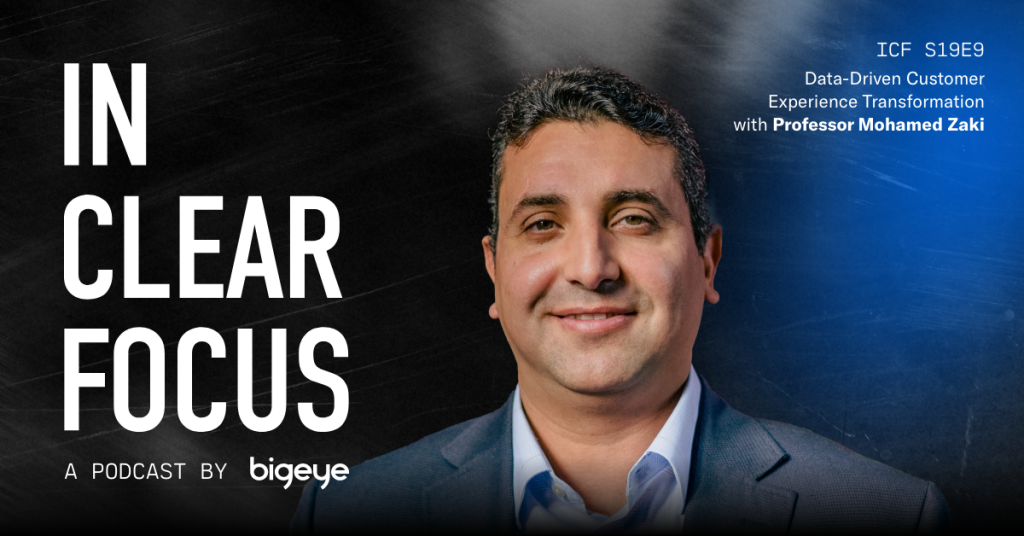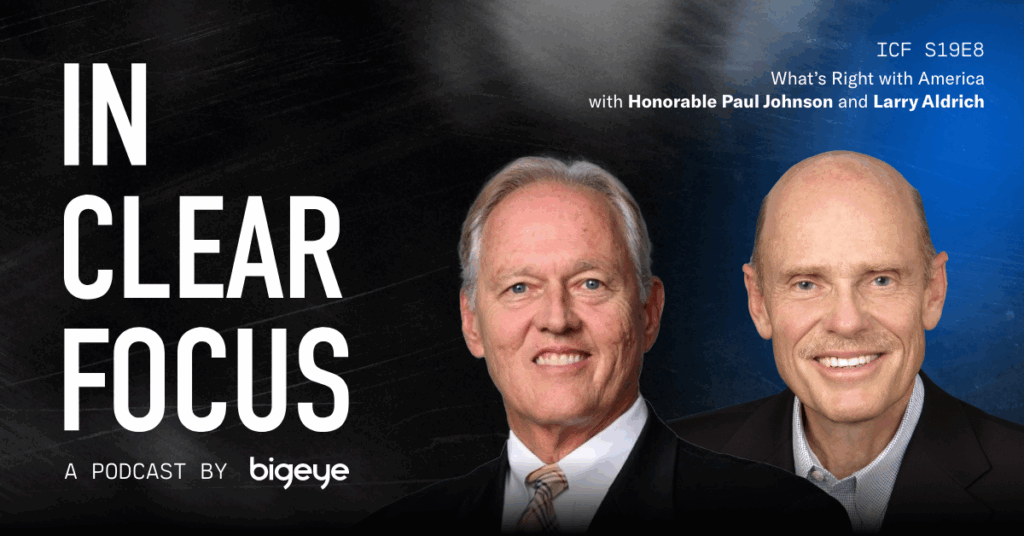Data-Driven Customer Experience Transformation with Mohamed Zaki

IN CLEAR FOCUS: Professor Mohamed Zaki of Cambridge University discusses his new book “Data-Driven Customer Experience Transformation.” Mohamed explores the shift from product-centric to customer-centric business models, distinguishing customer satisfaction from delight, and leveraging AI and data analytics to predict customer behavior. Mohamed also shares his insights on omnichannel experiences, personalization strategies, and real-world case studies, including Caterpillar’s CX transformation.
What’s Right with America With Honorable Paul Johnson and Larry Aldrich

IN CLEAR FOCUS: Honorable Paul Johnson and Larry Aldrich, authors of “What’s Right with America,” challenge fear-driven narratives dominating media. They discuss how optimism drives innovation, the power of individual agency over collective thinking, and the economic strengths of the United States. The conversation explores marketing lessons from their data-driven approach to countering pessimism, the importance of entrepreneurship, and how brands can tap into shared American values rather than divisions.
Bigeye’s 2023 US Pet Owners Study

Results from Bigeye’s new 2023 US Pet Owners Study reveal 97 percent consider their pets to be family members. What are the implications for pet care marketing?
Everything You Need to Know About Living in Austin, Texas
Learn everything you wanted to know about what makes Austin, Texas weird from the people that call it home. Download our Austin, TX research report to review all of the details. Introduction The capital city of Texas, Austin is the 11th-most populous city in the United States and the seat of Travis County. Located nearly in the center of the state, Austin is about three hours south of Dallas; three hours west of Houston; and about 90 minutes north of San Antonio. Experiencing a population growth of 34.1% between 2007 and 2017, the Austin region is one of the fastest-growing in the country Austin has been the fastest-growing major metro in the country for nine straight years, from 2010 to 2019. The metro population jumped to an estimated 2.2 million people as of July 1, 2019, according to the United States Census Bureau. That is an increase of 2.8% from the prior year, bigger than any other metro with at least 1 million residents. That’s 169 people added every day, on average. With a vibrant, well-educated, and youthful population of 2.2 million in the Metropolitan Statistical Area (MSA), the median age in Austin is 34.7 years. Of Austin’s population aged over 25, 44.8% have a Bachelor’s Degree. Leading the US in tech salary growth, it’s the number four city tech workers would consider moving to. Austin’s laid-back, take-it-or-leave-it kind of attitude matches well with its fun and “weird” culture, celebrated on bumper stickers and T-shirts with the slogan, “Keep Austin Weird.” “Everyone is welcome and has a place somewhere here. And it just makes it such a unique place because you just never know who you’re gonna meet or what experience you’re going to have just ‘cause there’s so many different things.” Jamie E, 38 Austin Neighborhoods Downtown Austin is popular with younger residents with middle to upper household incomes. These Austinites love the convenience of being just blocks from shopping on Congress Avenue, live music venues on 6th Street, and even some great parks, hiking, and biking along the Colorado River. Across the Colorado River from Downtown Austin sits South Austin, where young, artsy types congregate. Barton Heights offers great family areas, while Travis Heights and Bouldin Creek attract mainly hip, liberal Austinites. North and Northwest Austin include Round Rock, Cedar Park, and Leander, which attract a lot of families. The Leander is an award-winning school district, and Apple and Dell have large operations in the area. North Austin also has some great luxury apartments. These fast-growing Austin neighborhoods are popular with families. West Austin has some of the wealthiest neighborhoods in the city, such as Westlake Hills and Steiner Ranch. The commute into town is a bit longer than in other areas of Austin, but residents are closer to Lake Travis and the great outdoors. Neighborhoods Oak Hill and Circle C Ranch are further south. Although East Austin used to be considered the poorest part of the city, the area is now mostly a hipster neighborhood with many sleek, modern developments. Southeast Austin is home to a lot of University of Texas students, likely because of the large numbers of apartments and other rental properties in the area. “I am in a tiny house in East Austin. With three dogs – I have two Huskies and a mix. You’d be surprised the people who to live in the tiny houses where I’m at.” Shelly S, 42 Doing Business in Austin The Austin region offers businesses deep talent, education, quality healthcare, telecommunications, and a modern, international airport. The major employers include: Amazon, AMD, Apple, Charles Schwab, Dell, General Motors, IBM, Intel, National Instruments, Samsung, Tesla, VISA, and Whole Foods. Key Industries include: Advanced Manufacturing Clean Technology Creative & Digital Media Technology Data Management Financial Services and Insurance Life Sciences Space Technology The growth isn’t slowing down any time soon. The new Tesla Gigafactory, set to be located in eastern Travis County, will be one of the world’s largest and most advanced automotive plants and will bring an estimated $1 billion in capital investment to the region. In addition to being home to tech giants, Austin has a thriving startup scene. Austin area startups attracted $2.2 billion across 263 venture deals in 2019. Startups account for a larger share of businesses in Austin than in nearly all major US metros and Austin ranks 6th for new businesses per 1,000 population. “A couple of my friends work at Google and Facebook and they’re always saying so many people are moving in. I would say those apartment complexes are definitely to cater to people like that. Cause it’s like the new hub.” Madison P, 28 The Cost of Living in Austin Texas consistently ranks as one of the nation’s most favorable business climates based on its low tax burden and competitive regulatory environment. Texas features no personal or corporate income tax, and overall the state has one of the lowest state and local tax burdens in the US. According to Austin’s Chamber of Commerce, the cost of living is 2% lower than the national average. Austin Apartment Costs Renters will generally find more expensive prices in Austin than most similar cities. The median two-bedroom rent of $1,450 is above the national average of $1,193. The city’s median one-bedroom rent is $1,175. While rents in Austin fell moderately over the past year (-0.6%), many cities nationwide saw slight increases (+0.2%). According to RENTCafé, these 5 Austin neighborhoods offer a good selection of rental apartments, unique dining, shopping, atmosphere, walkability, and a sense of community: Downtown Austin (average rent $2,200/mo) Central Austin ($2,100/mo) Clarksville, between downtown and the MoPac Expressway ($2,100/mo) Zilker, South Austin ($1,400/mo) Travis Heights, South Austin ($1,400/mo) What Austin Renters Want No two renters are the same but many Austin renters are consistently seeking features and amenities. Here are the top things tenants report looking for in a property: Convenient Location – People want to live, work, and play in a geographically convenient circle. If your multifamily property is located